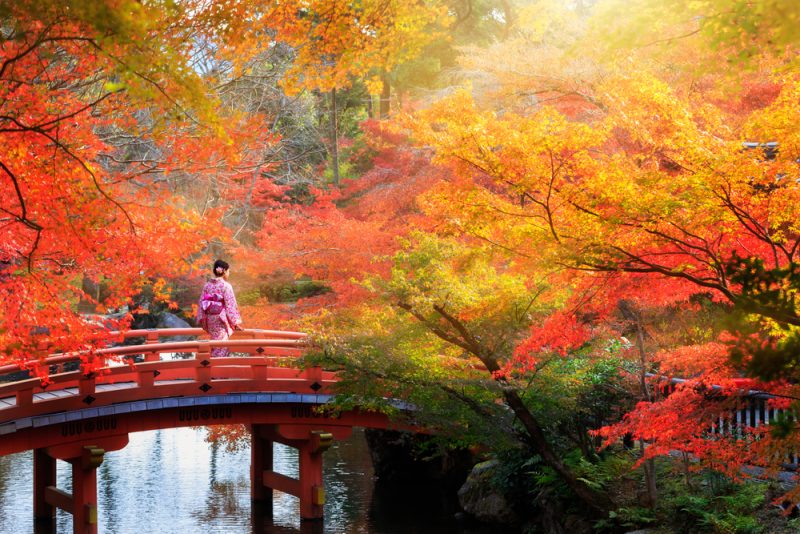Autumn in Japan is one of the most popular times of the year for visitors. This is when the fiery reds, oranges, and yellows of the leaves transform the landscape.
The tradition of admiring the autumn foliage is known as Momijigari (literally, “hunting red leaves”) and it has been cherished for centuries in Japan.
There are endless opportunities to enjoy Momijigari. Here we go through the best places so you can plan the perfect autumn getaway to Japan.
Table of Contents
Where to see autumn leaves in Japan
The best places to see autumn colors in Japan largely depends on when and where you travel.
If you are visiting a bustling city such as Tokyo, city parks are an accessible option to see the autumn leaves.
Alternatively, Japan’s many mountainous hiking trails are a great option to take in the Japanese countryside. The area surrounding Mount Fuji, including lake Kawaguchiko, and national parks such as Daisetsuzan in Hokkaido and Oze north of Tokyo are ideal for Momijigari.
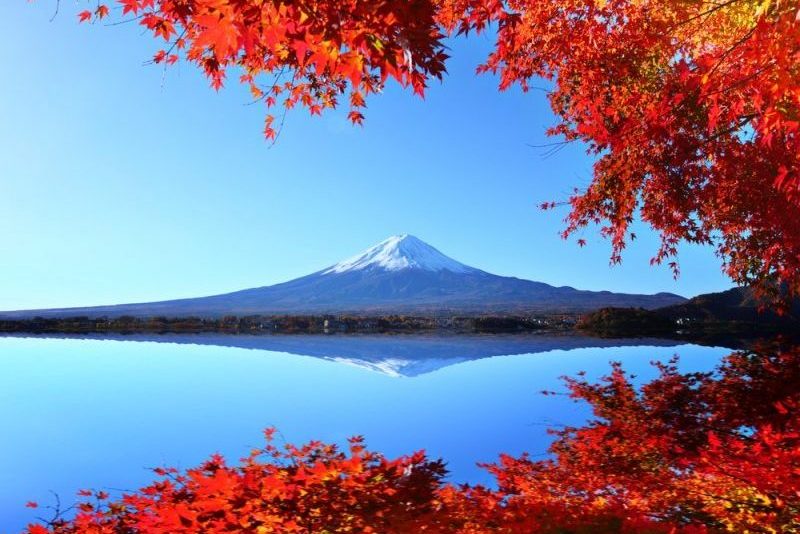
Enjoy Momijigari by train
Another option is simply looking out the window while traveling by train with a Japan Rail Pass. Between stations, you’ll have the opportunity to observe the local countryside in all its autumn glory.
For a truly unique Koyo experience at a relaxed pace, consider a sightseeing train ride on the Sagano Scenic Railway through the picaresque Arashiyama region.
Top places in Japan to see autumn leaves
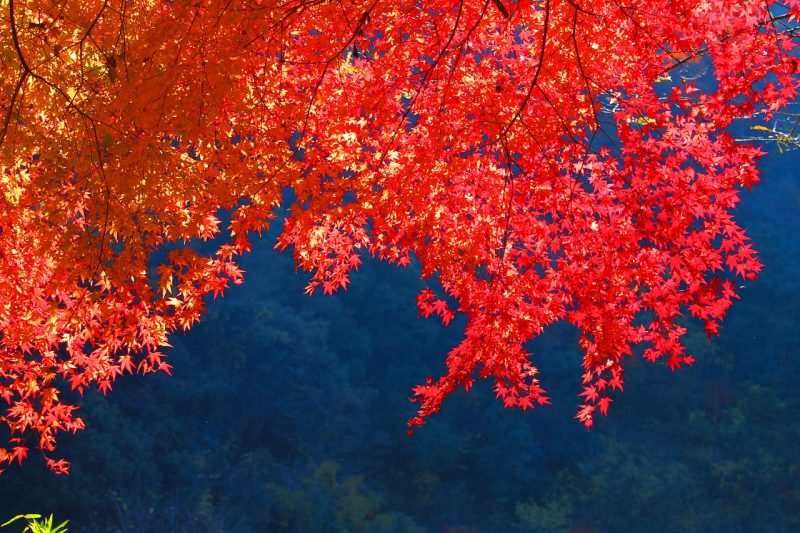
Here are 15 of the most stunning spots across the country to enjoy autumn leaves:
- Daisetsuzan National Park (Hokkaido): Japan’s earliest autumn foliage.
- Lake Akan (Hokkaido): Reflections of fiery leaves in the lake.
- Oirase Gorge & Lake Towada (Aomori, Tohoku): Waterfalls framed by autumn trees.
- Hachimantai (Iwate, Tohoku): Scenic mountain drives through fall colors.
- Nikko (Tochigi, Kanto): Famous for Toshogu Shrine and mountain foliage.
- Mount Takao (Tokyo): A hiking paradise just outside the city.
- Kawaguchiko (Yamanashi, Chubu): Mount Fuji framed by autumn leaves.
- Kiso Valley & Nakasendo Trail (Nagano, Chubu): Historic post towns with colorful mountainsides.
- Kurobe Gorge (Toyama, Chubu): Ride the sightseeing train for stunning canyon views.
- Kenrokuen Garden (Ishikawa, Chubu): One of Japan’s top three gardens, glowing in red and gold.
- Eikando Temple (Kyoto, Kansai): Known for its brilliant maples.
- Arashiyama (Kyoto, Kansai): Iconic river and hillsides bursting with color.
- Kiyomizu-dera Temple (Kyoto, Kansai): Sweeping views of Kyoto’s foliage.
- Miyajima Island (Hiroshima, Chugoku): Maple trees around Momijidani Park.
- Ritsurin Garden (Kagawa, Shikoku): A traditional landscape garden with vivid autumn hues.
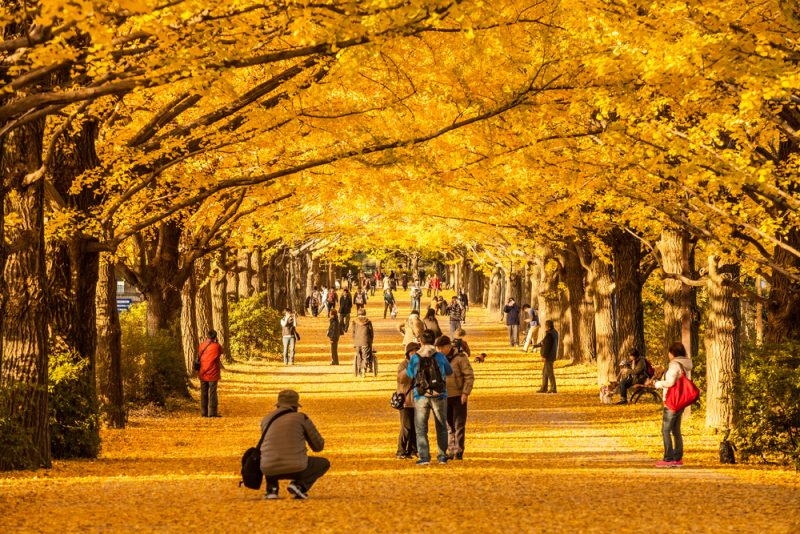
Autumn’s best places in Tokyo
Although internationally known as a bustling metropolis, Tokyo is also packed with green spaces such as parks and gardens ideal for Momijigari.
Some of the most popular include:
Shinjuku Gyoen National Garden
One of the largest parks in Tokyo, Shinjuku Gyoen is a peaceful retreat from the city buzz. Its wide lawns, ponds, and carefully designed gardens come alive in late November with red maples, golden ginkgoes, and fiery plane trees.
Rikugien Garden
Rikugien is one of Tokyo’s most elegant landscape gardens, famous for its maple trees and evening illuminations during autumn. Paths wind around ponds and small hills, creating dramatic reflections of the glowing foliage.
Koishikawa Korakuen Garden
This Edo-period garden combines water features, stone bridges, and vibrant trees that transform into deep reds and yellows in November. It’s one of the best places to experience traditional Japanese landscaping with a seasonal twist.
Yoyogi Park
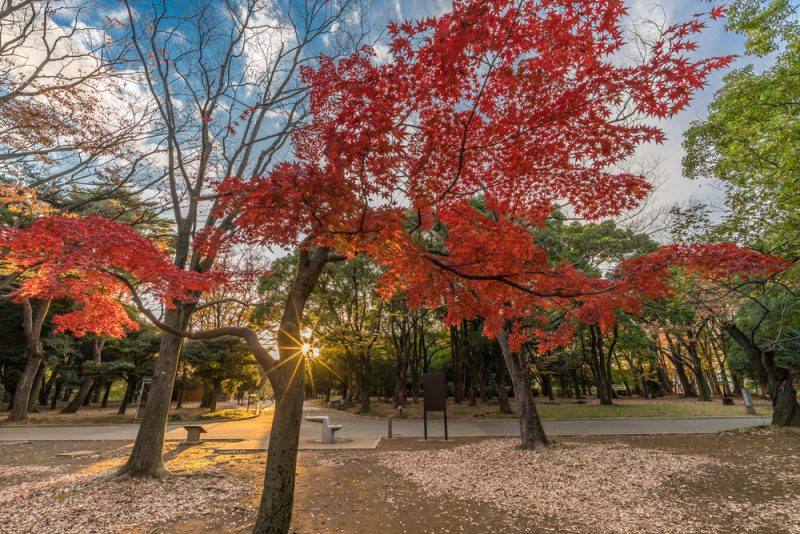
Located near Harajuku and Shibuya, Yoyogi Park offers wide open spaces perfect for a relaxed stroll or picnic beneath ginkgo and maple trees. Its accessibility makes it a favorite Momijigari spot for both locals and visitors.
Showa Memorial Park (Tachikawa)
Showa Kinen Park is famous for its long rows of golden ginkgo trees, complemented by bright red maples across its expansive grounds. The park’s sheer size offers plenty of space to enjoy autumn colors without the usual city crowds.
Looking for the best time to admire it? 2025 Fall Leaves Forecast
Autumn’s best places in Kyoto
Kyoto is often considered the best city in Japan to view the impressive autumn foliage, thanks in part to the large number of traditional temples with sprawling, forested grounds.
Some of the best Momijigari spots in Kyoto include:
Eikando Temple
Eikando is one of Kyoto’s most iconic spots for Momijigari. The temple is surrounded by thousands of maples that light up in crimson during peak season, creating a breathtaking view, especially around the pond.
Tofuku-ji Temple
Tofuku-ji is renowned for its wooden bridges that overlook a valley filled with maples. In autumn, the scene transforms into a sea of fiery red leaves, making it one of Kyoto’s most photographed foliage locations.
Kiyomizu-dera Temple
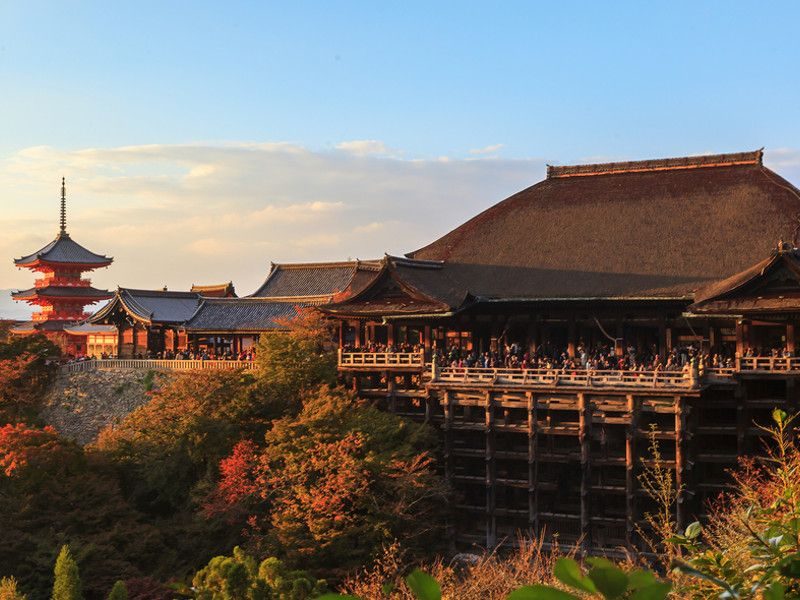
Perched on a hillside, Kiyomizu-dera offers sweeping views of Kyoto framed by autumn leaves. The temple’s large wooden stage looks out over a forest of glowing maples, especially spectacular during evening illuminations.
Arashiyama & Togetsukyo Bridge
The Arashiyama district is a classic autumn destination, with colorful mountains rising above the Katsura River. The view from Togetsukyo Bridge, where the hillsides glow with vibrant foliage, is one of Kyoto’s most iconic autumn scenes.
Nanzen-ji Temple
Nanzen-ji blends Zen architecture with lush gardens and maple trees. Its massive Sanmon Gate provides a panoramic view of the autumn landscape, while the temple grounds themselves are a calm and colorful place to wander.
